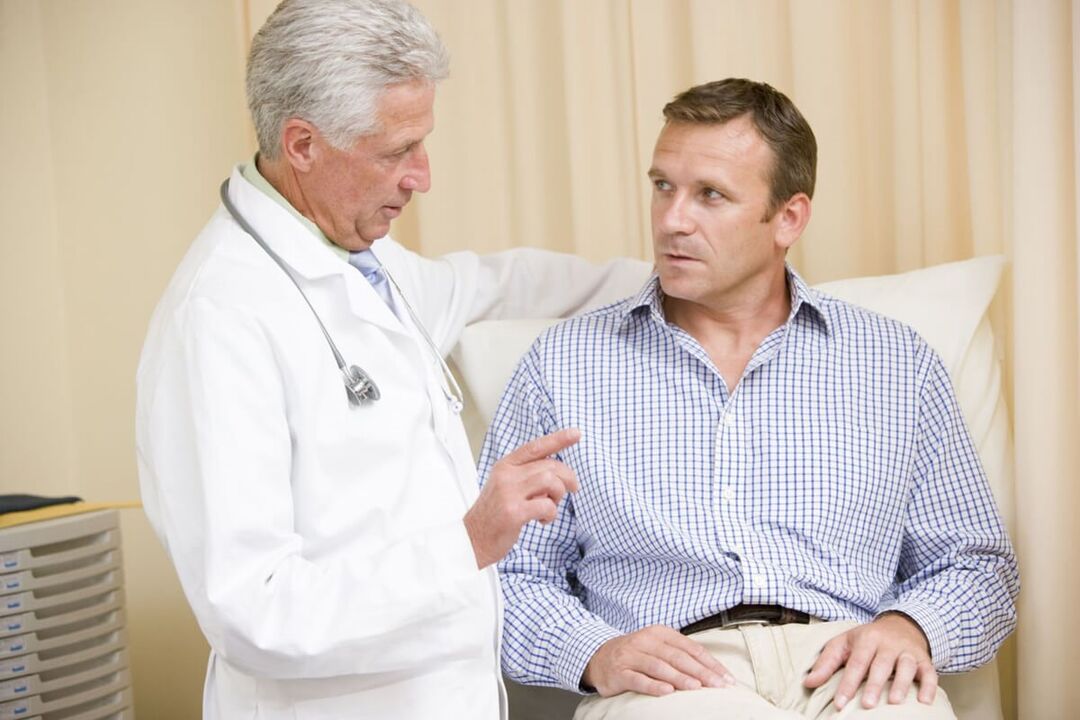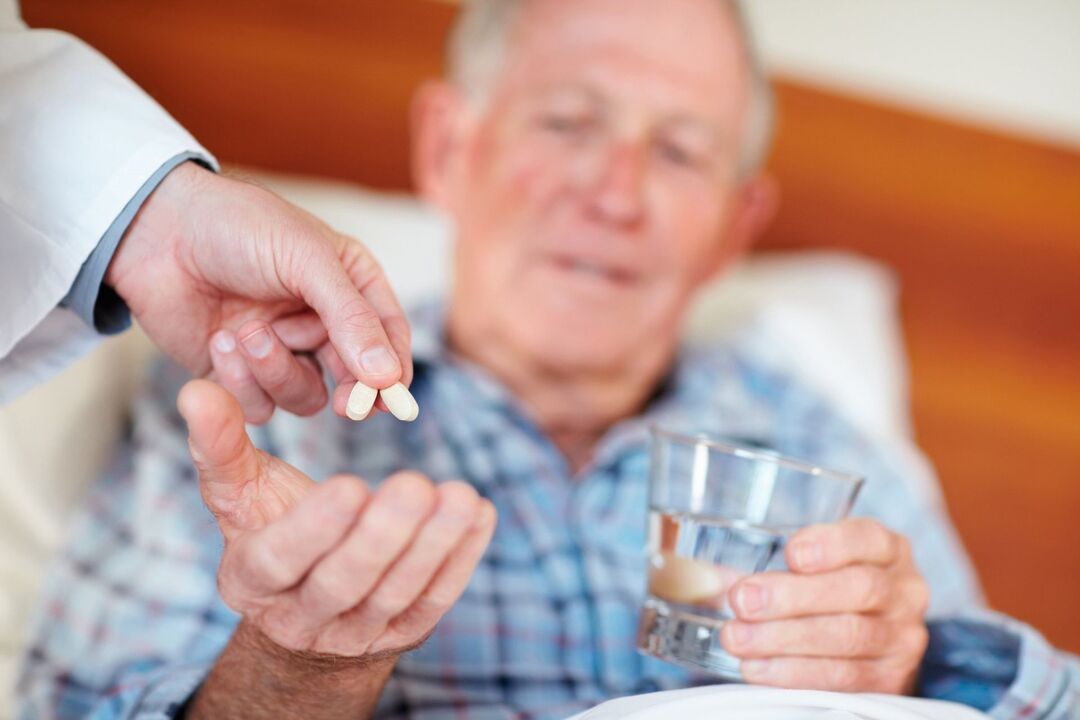
Prostate adenoma and prostatitis are two diseases that cause real anxiety attacks in men. This "male" pathology is not an absolute analogue, although in both cases the prostate gland is affected, and you need to take medication for the treatment of prostatitis and prostate adenoma, use additional methods of therapy and prescribe surgery for complications. However, talking about adenomas, they mean benign neoplasms, while prostatitis is an inflammatory process that occurs in the prostate.
Both of these diseases are mostly diagnosed in men aged 45 or 50, while many men mistakenly believe that adenomas are a complication of prostatitis. This misconception is often based on a similarity of symptoms - both pathologies are accompanied by difficulty urinating and pain. The treatment has some basic similarities and differences.
Principles of Disease Therapy
Consider the main stages of therapy for prostate adenoma and prostatitis. In both cases, treatment should be comprehensive, which will make it more effective. Acute prostatitis in men can be cured with the help of antimicrobial therapy using drugs with various effects, anti-inflammatory drugs, and taking desensitizing drugs. If an abscess is suspected, opening of the source of the purulent inflammatory process is prescribed.
Drug treatment is designed to stabilize the patient’s condition by lowering the temperature, stopping inflammation and returning the general condition to normal. The doctor confirms the need to remove the abscess with rectal examination and instrumental, laboratory tests. After the autopsy, a drain was placed in the hospital to drain the pus. After the release of the prostate from the pus, the inflammatory process stops, the drainage is removed, after which the wound heals in about a week.
Chronic prostatitis in men requires a longer treatment time against the background of changes in lifestyle and normal diet. The main goal of therapy is to eliminate congestion. To do this, use:

- Take antimicrobial medication, which will take two to eight weeks.
- Means that increase blood circulation.
- Prescription of non-steroidal anti-inflammatory drugs.
- Use of physiotherapeutic methods - magnetotherapy and laser treatment. The use of ultrasound, reflexology and hirudotherapy is also recommended.
- Massage the glands.
Modern therapeutic methods guarantee the establishment of a fairly stable remission, a period of which can be many years, and by the coincidence of a successful condition, complete healing.
When prostate adenoma is detected in the early stages of development, the most effective treatment is medication. Similarly with prostatitis therapy in men, physiotherapy, dietary therapy is prescribed, and it is recommended to adjust the lifestyle. The purpose of taking the drug is to slow the growth and reduce the number of glands, to reduce the severity of violations during urination, which they use:
- Antimicrobial agents.
- A drug that corrects hormone metabolism, which allows you to make the glands smaller.
- To stabilize the process of urination, drugs are recommended to improve the tone of the prostate and urethra.
- Vegetable capsules, the difficulty of working with which arises due to the fact that their action is not fully understood.
- Photodynamic therapy is prescribed.
- Ozone therapy, exercise therapy
In both cases, it is permissible to use folk recipes as additional medicine after consultation with the attending physician. Medications used for prostatitis and adenomas will work well against the background of the victim’s addiction rejection.
The use of antibiotics in the formation of prostatitis and glandular adenomas
Consider what medications you should take for prostatitis and prostate adenoma, and start with antimicrobial agents. Antibiotics for prostate adenoma are only used when a bacterial infection accompanies the disease, which is considered relatively common. Antimicrobial drugs for prostatitis are among the main points of therapy. In both cases, the following can be given:
- Drugs of the penicillin group. They come in the form of tablets, injections, and oral suspensions.
- Tetracycline group materials.
- Cephalosporins. Essential medications for prostatitis. They are prescribed when inflammation is provoked by gram-positive or gram-negative bacteria, anaerobic pathogens. Ingredients should be given parenterally.
- Fluoroquinolones. They are prescribed in the presence of ureaplasma, chlamydia, gardnerella, staphylococcal or streptococcal pathogens, Escherichia coli or mycoplasma.
- Macrolide groups. The advantage of funds is low toxicity, moreover, they can accumulate in the prostate. The drug is produced in the form of tablets or solutions.
- Aminoglycoside. This is an excellent option if the causative agent of the inflammation is not identified or there are several of them.
Treatment with antimicrobial drugs for this disease can produce many negative symptoms, but it is accompanied by side effects. For the most part, this is a disorder of the digestive system and the formation of dysbiosis.
Therapy with inhibitors and blockers
Among drugs for prostatitis and prostate adenoma, α1-adrenergic blockers and inhibitors. The first has a relaxing effect on the muscle tissue of the prostate gland, because it is possible to quickly eliminate muscle spasms, which normalizes the process of urination, which is disrupted in 85%. Moreover, such drugs can cause a strong drop in blood pressure, which should be taken into account when prescribing.
For prostate adenomas, medications include 5-alpha reductase inhibitors. These funds are used most often, because they effectively prevent the development of pathology, help reduce the size of the prostate and contribute to the normalization of the urinary process. Inhibitors are very effective drugs, because after a course of therapy, over 50% of victims do not require surgical intervention. A greater effect is achieved with the combined treatment method, moreover, the results obtained are more stable than the single treatment.
Preparations for pain and inflammation in the prostate
Therapy for the pathology under consideration involves the removal of pain and the elimination of inflammatory processes. The pain is especially excruciating during the exacerbation of the course of the disease; antispasmodics help relieve it. They help relax the smooth muscles of the prostate gland and help improve blood circulation.
The inflammatory process in the prostate gland is characteristic of prostatitis. If you neglect treatment, they will progress, accompanied by pain, impaired erectile function, urinary retention against the background of compressed ducts. Often, when recommending how to treat prostatitis, doctors prescribe medication to relieve inflammation, which in many cases allows to remove the negative symptoms.
Cheap and effective medications for prostatitis, which are anti-inflammatory, non-steroidal, antipyretic agents, can also be used. Any medication should be taken strictly as directed by a physician and under his or her direct supervision.
Herbal preparations used in treatment
Remedies for adenomas, which have a significant positive effect - herbal remedies, among which extracts obtained from Permikson palm stand out.
Can be used:
- Drugs that have a positive effect on systemic metabolism, which is also a booster. It contains sandalwood, sage, ginseng, ginger, cloves, calamus and other components.
- The medicine is a dietary supplement and contains over 40 ingredients, most of which are herbal.
- The drug is used as an antiseptic, analgesic and immunomodulator with antipyretic and anti-inflammatory properties. This product contains burdock root, elm bark and ash, juniper berries and bearberry leaves.
This is not an overview of drugs that can be used to treat prostatitis and prostate adenoma. However, they should be prescribed exclusively by a doctor, which will avoid unpleasant and dangerous consequences.
























